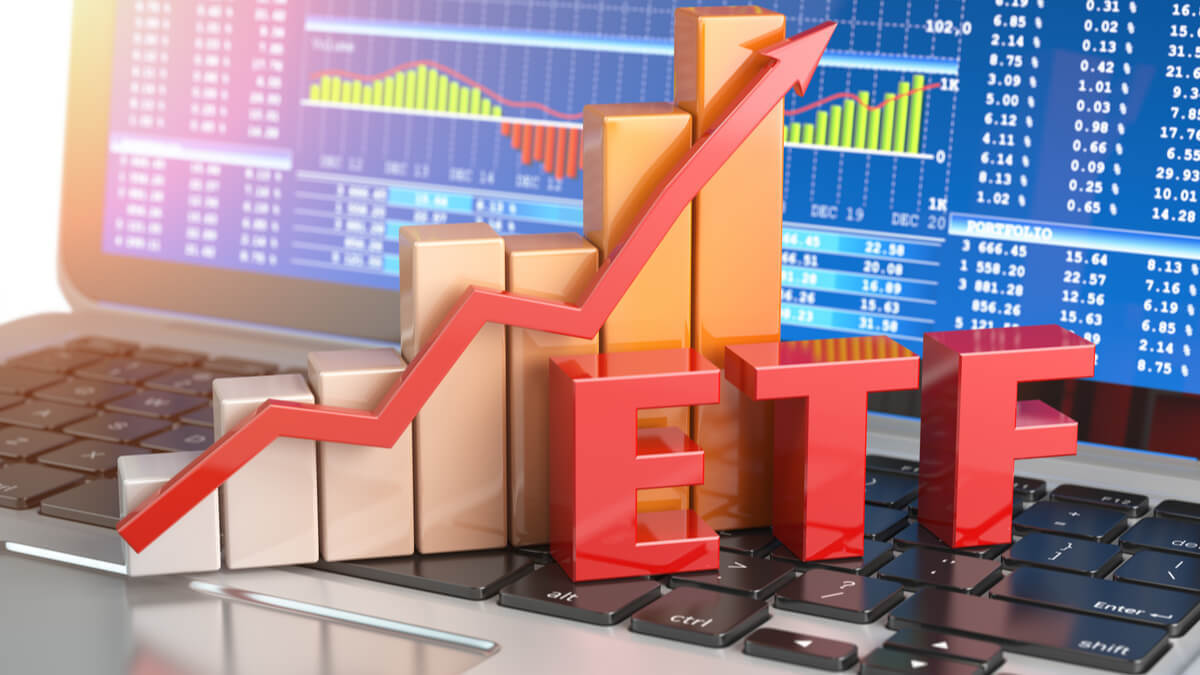#ETFs
$DIA $IWM $SPY $QQQ $RUTX $GLD $SLV
An ETF is an exchange traded fund. It is a type of security that tracks an index sector, commodity, or other asset, but which can be purchased or sold on a stock exchange the same as a regular stock.
An ETF can be structured to track anything from the price of an individual commodity to a large and diverse collection of securities.
ETFs can even be structured to track specific investment strategies.
A well-known example is the SPDR S&P 500 ETF is SPY, which tracks the S&p 500 index.
ETFs can contain many types of investments, including stocks, commodities, bonds, or a mixture of investment types.
An exchange traded fund is a marketable security, meaning it has an associated price that allows it to be easily bought and sold.
ETF share prices fluctuate all day as the ETF is bought and sold; this is different from mutual funds that only trade once a day after the market closes.
An ETF is a type of fund that holds multiple underlying assets, rather than only 1 like a stock. Because there are multiple assets within an ETF, they are a popular choice for diversification.
There are several types of ETFs available to investors that can be used for income generation, speculation, price increases, and to hedge or partly offset risk in an investor’s portfolio.
Below are several examples of the types of ETFs, as follows:
- Bond ETFs might include government bonds, corporate bonds, and state and local bonds—called municipal bonds.
- Industry ETFs track a particular industry such as technology, banking, or the oil and gas sector.
- Commodity ETFs invest in commodities including crude oil, gold and silver (GLD & SLV)
- Currency ETFs invest in foreign currencies such as the USD or CAD, EUR, JPY and others.
- Inverse ETFs attempt to earn gains from stock declines by shorting stocks. Shorting is selling a stock, expecting a decline in value, and repurchasing it at a lower price.
In the US, most ETFs are set up as open-ended funds and are subject to the Investment Company Act of 1940 except where subsequent rules have modified their regulatory requirements. Open-end funds do not limit the number of investors involved in the product.
Below are examples of popular ETFs on the market today. Some ETFs track an index of stocks creating a broad portfolio while others target specific industries, as follows:
- The SPDR S&P 500 (SPY) is the oldest surviving and most widely known ETF tracks the S&P 500 Index.
- The iShares Russell 2000 (IWM) tracks the Russell 2000 small-cap index.
- The Invesco QQQ (QQQ) indexes the Nasdaq 100, which typically contains technology stocks.
- The SPDR Dow Jones Industrial Average (DIA) represents the 30 stocks of the Dow Jones Industrial Average.
- Sector ETFs track individual industries such as oil (OIH), energy (XLE), financial services (XLF), REITs (IYR), Biotech (BBH).
- Commodity ETFs represent commodity markets including crude oil (USO) and natural gas (UNG).
- Physically-Backed ETFs: The SPDR Gold Shares (GLD) and the iShares Silver Trust (SLV) hold physical gold and silver bullion in the fund.
ETFs provide lower average costs since it would be expensive for an investor to buy all the stocks held in an ETF portfolio individually.
Investors only need to execute 1 transaction to buy and 1 transaction to sell, which leads to fewer broker commissions since there are only a few trades being done by investors.
Brokers typically charge a commission for each trade. Some brokers even offer no-commission trading on certain low-cost ETFs reducing costs for investors even further.
An ETF’s expense ratio is the cost to operate and manage the fund.
ETFs typically have low expenses since they track an index. For example, if an ETF tracks the S&P 500 index (SPY), it might contain all 500 stocks from the S&P making it a passively-managed fund and less time-intensive.
Pros
- Access to many stocks across various industries
- Low expense ratios and fewer broker commissions.
- Risk management through diversification
- ETFs exist that focus on targeted industries
Cons
- Actively-managed ETFs have higher fees
- Single industry focus ETFs limit diversification
- Lack of liquidity hinders transactions
An ETF is more tax-efficient than a mutual fund since most buying and selling occurs through an exchange and the ETF sponsor does not need to redeem shares each time an investor wishes to sell, or issue new shares each time an investor wishes to buy.
Redeeming shares of a fund can trigger a tax liability so listing the shares on an exchange can keep tax costs lower. In the case of a mutual fund, each time an investor sells their shares they sell it back to the fund and incur a tax liability can be created that must be paid by the shareholders of the fund.
Since ETFs have become increasingly popular with investors, many new funds have been created resulting in low trading volumes for some of them. The result can lead to investors not being able to buy and sell shares of a low-volume ETF easily.
Have a healthy weekend, Keep the Faith!









